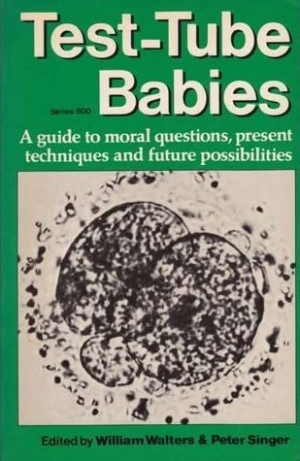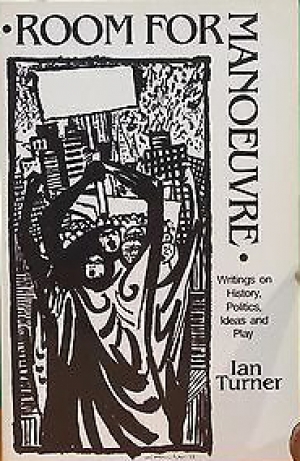Archive
Don Watson reviews 'Tubbo' by Paul de Serville, 'The Homestead' by Peter Freeman, and 'Homesteads of Southern New South Wales 1830–1900' by Maurice Canton
Primitive accumulation was a brutal process often performed by gentlemen. Not all pastoralists were brutes – unless they had to be. Not all Aboriginals were murdered – unless they had to be. Facades of normality were hurriedly erected to confound Karl Marx. For a moment the Australian pastoralists could build oases of sophistication on the Australian landscape. For a generation or so they managed to impose a uniquely Australian gentility around the waterholes and rivers. That the phenomenon was a passing one is symbolised by the life and death of James Bourke in the Riverina. A secondary pioneer, he died at the age of twenty-four. His brother Thomas, ‘a fine athletic man’ died of the booze aged twenty-six. The body of his step-uncle, James Peter, was found in the river a few days later: he had been in ‘a severe fit of the horrors’. All sorts of disasters of a man-made kind – from fatal flaws to death duties – combined with the elements to wash away the billabong dynasties.
... (read more)Brian Scarlett reviews 'Test-Tube Babies' edited by William Walters and Peter Singer
The Monash University team at the Queen Victoria Hospital in Melbourne has achieved great success in its endeavours to relieve infertility by the production of ‘test-tube babies’. This collection explains what goes on, discusses moral and legal problems relating to the programme, and gives a preview of what might lie ahead. The contributors include members of the medical team, their clients, and moral philosophers and theologians.
... (read more)This book is concerned essentially with the impact of the environment upon Europeans in Australia. It sets out to test C.E.W. Bean’s thesis that during the Great War the most effective Australian soldiers came from the bush. It does this in relation to men from Western Australia, arguing that the West was one of the most predominantly bush areas of Australia, and therefore that there, if anywhere, the influence of the bush should show up in the achievements of soldiers.
... (read more)I’m a speedy reader, a rapid degutter of poems, yet it took me days to read John Tranter’s Selected Poems. This poetry is so packed with meaning, with metaphor, so inventive, intelligent, and funny it’s impossible to hurry. It left me, though I’d read most of it before, wishing for a Complete Poems to fill the gaps.
... (read more)A common theme unites the five books reviewed here: the effects on Aboriginals of European and Asian settlement in Australia, and the position of Aboriginals in the society that has developed from that settlement. The work of historians, a political scientist and anthropologists, the writings reflect changes in Australian historiography and anthropology. Reece (1979) recently made a plea on behalf of Australian historiography for more to be done by black and white historians to eradicate the tradition that Australian history was a white history beginning with Captain Cook. A parallel plea has been made to anthropologists in Langton’s (1981) criticism of anthropologists for concentrating their research efforts on remote communities. The work of Aboriginal historians is not represented here, but two of these books are indicative of the quantum leap in the quantity and quality of writing an Aboriginal history. Although anthropology is slow to change, a glance through recent bibliographies published by the Australian Institute of Aboriginal Studies reveals an increase in the proportion of social anthropological publications on Aboriginal society outside the more remote areas. That trend appears in the content of the volume edited by Howard.
... (read more)Beatrice and Sydney Webb are still alive, though failing. At least, that is the impression one gets from these five pamphlets, which mark the resurrection of the Victorian Fabian Society since 1980, after temporarily shaking off the mortal after coil.
... (read more)A grizzled, greying migrant, who was holidaying in Sicily after twenty years in Australia, attended a civic reception for participants in a seminar on Australian literature held in Piazza Armerina last January. His wife and three children were in Moonee Ponds. He was obviously pleased to speak with the Australians present as if they somehow confirmed his experience in a far-off land.
... (read more)Dirk den Hartog reviews 'Life Rarely Tells: An autobiography' by Jack Lindsay
One heady day in the mid I920s, sculptor and Lindsayite recruit Guy Lynch (brother of the elegaic subject of Slessor’s ‘Five Bells’), held forth in a pub at Circular Quay on his plan for Sydney to become an Hellenic city. The Quay itself he saw as a magnificent ampitheatre for the incarnation of the Lindsay group’s Nietzschean dream of Dionysian joy, as revealed in the vital art affirmed as the salvation from the twin vices of bourgeois philistinism and modernistic decadence, the canon that ran from Shakespeare, Rubens and Beethoven, to Norman Lindsay and Hugh McCrae. He-men would lean against pillars, girls would stroll about, and grand opera would be played amongst forests of statues.
... (read more)Michael Keon reviews 'Albert Tucker' by James Mollison and Nicholas Bonham
Macmillan’s Albert Tucker is a pioneering venture. It is not just another well-arranged, well-printed collection of paintings by a notable painter, it is an endeavour to present the whole conspectus of a painter’s work and mind.
... (read more)Tim Rowse reviews 'Room for Manoeuvre: Writings on history, politics, ideas and play' selected and edited by Leonie Sandercock and Stephen Murray-Smith
A joke told annually and publicly for fourteen years closes this collection of Ian Turner’s work. From 1965 to 1978, Turner delivered the Ron Barassi Memorial Lecture and so created the site of an imagined overlap between the more formal rituals of the intellectual culture and the rowdy world of spectatordom, the VFL, the most visible and familiar self-presentation of the popular. He fabricated this site for speaking ‘our’ culture by romping around it in careful pastiche.
... (read more)






